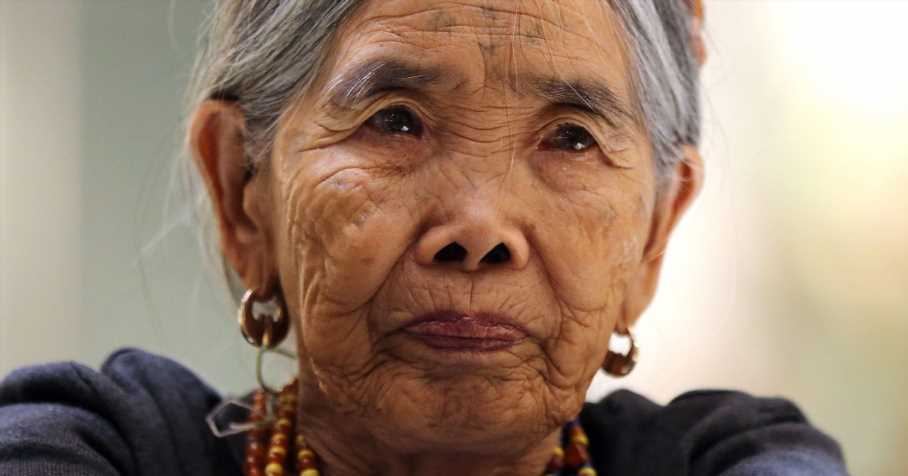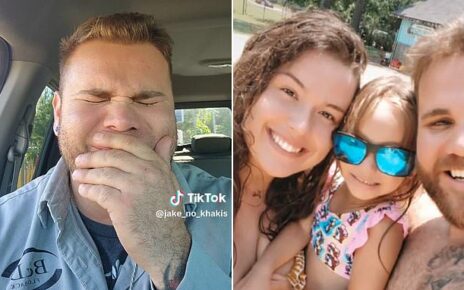
Herstory. Vogue Philippines tapped a 106-year-old legend to grace the cover of the magazine’s beauty issue.
From Magazine Covers to the Red Carpet, Check Out All the Times Stars Tricked Fans With Fake Tattoos
The cover, which debuted online on Thursday, March 30, features Filipino tattooist Apo Maria ‘Whang-Od’ Oggay — Vogue’s oldest-ever cover model. The artist is a breathtaking sight on the front page, donning a jeweled headband, tiny hoop earrings and a bold red lip. She also wore a layered bead necklace, a black tank — that exposed her extensive body art — and a patterned skirt.
“Apo Maria ‘Whang-Od’ Oggay symbolizes the strength and beauty of the Filipino spirit,” the publication wrote via Instagram, announcing the issue on Thursday, March 30. “Heralded as the last mambabatok of her generation, she has imprinted the symbols of the Kalinga tribe—signifying strength, bravery, and beauty — on the skin of thousands of people who have made the pilgrimage to Buscalan.”
Every Time Lizzo Used Her Platform to Preach Body Positivity
The issue highlights Oggay’s life-long work with ink, which began when she was only 16, learning from her father. In her community tattooist or “mambatoks” use a hand-tapping technique — a traditional tattooing method that does not use machines or modern equipment to put ink inside the skin. Oggay broke tradition by learning the process as hand-tapping teaching was traditionally passed down to men.
In order to view the video, please allow Manage Cookies
Per practice, Oggay can only share her tattoo knowledge with her bloodline — and because she has no children of her own, she pours her wisdom into her grandniece, Grace Palicas.
“I was the first child to learn how to tattoo,” Palicas, 26, told Vogue. “When I left for college in 2015, [my cousin] Elyang was next to learn so that she could help Apo when so many tourists were coming.”
Oggay and her family’s respect for tattooing dates back many years. In their culture, tattooing was meant to recognize and praise headhunting warriors. For women, body ink symbolized “fertility and beautification,” per Vogue. “The tattooed elder women of Kaling often say that when they die, they can’t take their beads and gold with them to the afterlife. They only have the markings on their body,” the outlet explained.
Shop the Best Makeup, Haircare, Skincare and Other Beauty Must-Haves for 2023
While Oggay treasures the rich origin of the ink, she happily applies her gift to anyone who visits her remote village of Buscalan.
“When visitors come from far away, I will give them the tatak Buscalan, tatak Kalinga for as long as my eyes can see,” she said of the signature geometric markings.
For access to all our exclusive celebrity videos and interviews – Subscribe on YouTube!
Source: Read Full Article

